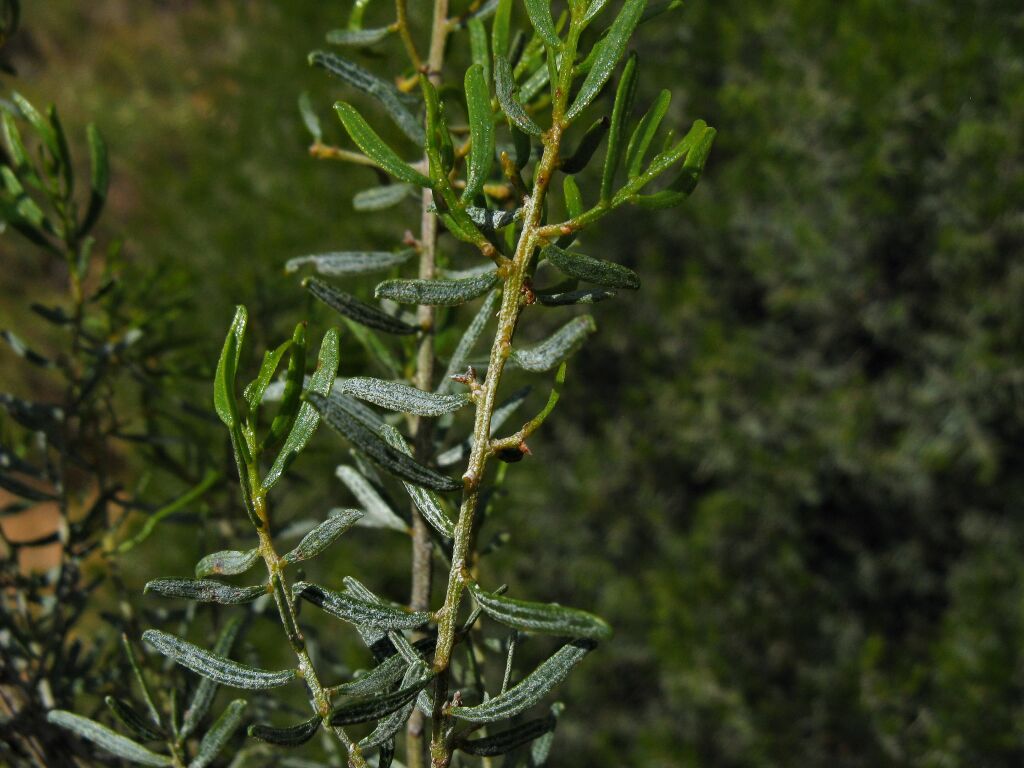Acacia wilhelmiana
F.Muell. Dwarf NealieDense, spreading, often resinous shrub, usually to 2 m high; branchlets sparsely to moderately covered with appressed, minute hairs, glabrescent, commonly yellow-ribbed at extremities. Phyllodes linear or (when broad) narrowly oblong-elliptic, sometimes subterete, commonly slightly uncinate, usually 1–3 cm long, 1–4 mm wide, 5–20 times as long as wide, curved to shallowly sigmoid, sometimes incurved only at base, otherwise straight, glabrous to subglabrous; veins 2 (rarely more) per face when flat, 5 in all when subterete, indistinct or prominent and sometimes mealy. Peduncles 1 or 2 per axil, usually 2–5 mm long, often with reduced racemes to c. 1 mm long, with dense cover of light golden, appressed, minute hairs, basal bract solitary; heads globular, usually 17–22-flowered, light golden. Flowers 5-merous; sepals united. Pods to 6 cm long, 2–3 mm wide, strongly curved to openly one-and-a-half coiled, often twisted, viscid when young, glabrous; seeds longitudinal, oblong, arillate. Flowers Aug.–Nov.
LoM, MuM, RobP, MuF, GipP. Also SA, NSW. Restricted to mallee regions of south-eastern Australia, growing in sand or loamy sand on plains or dunes.
Phyllodes appear to vary continuously from broad and flat to narrow and subterete, specimens with broad phyllodes resembling A. montana.
Although assigned here to Group 3, the inflorescence usually has a very short (c. 1 mm) rachis.
Entwisle, T.J.; Maslin, B.R.; Cowan, R.S.; Court, A.B. (1996). Mimosaceae. In: Walsh, N.G.; Entwisle, T.J., Flora of Victoria Vol. 3, Dicotyledons Winteraceae to Myrtaceae, pp. 585–658. Inkata Press, Melbourne.
 Spinning
Spinning


